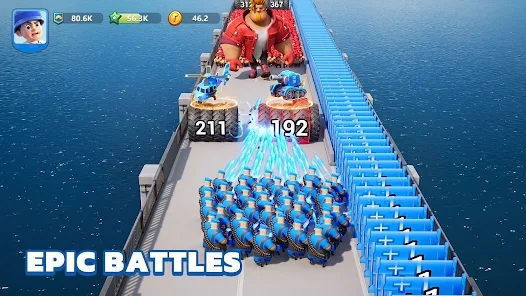Unlocking Success: How Idle Games Are Transforming Business Simulation Games
In the world of gaming, change is the only constant. One area that’s seen a dramatic transformation is that of idle games. These seemingly simple yet captivating games aren't just for entertainment; they’re making waves in business simulation games and reshaping how we perceive strategic play. Let's delve into this fascinating evolution and discover the mechanisms at play.
What Are Idle Games?
Idle games, often referred to as incremental games, are a genre where players make progress without continuous, active engagement. Imagine setting up a thriving empire with minimal daily input. It’s appealing, isn't it? Players can build businesses, manage resources, and earn profits while being free to multitask with other duties. Popular titles like "Adventure Capitalist" and "Cookie Clicker" exemplify this genre's addictive nature.
The Rise of Business Simulation Games
When we talk about business simulation games, we're referring to games that focus on managing resources, finance, and strategy. These games blend creativity with strategic planning. They invite players into the complexities of running a business, intertwining fun with learning. Games like "SimCity" and "RollerCoaster Tycoon" paved the way for a vibrant genre that continues to evolve. But can idle games contribute to this evolution?
How Idle Games Revolutionize Business Simulation
Idle games introduce new gameplay dynamics that change the landscape of business simulation games in numerous ways:
- Simplicity of Mechanics: Idle games strip down complicated mechanics, making them accessible for all players.
- Effective Monetization: Many idle games employ ad-based monetization and in-game purchases to generate revenue.
- Time-Management Features: They foster strategic planning as players often choose what to unlock and when.
- Community Engagement: Features like leaderboards and achievements keep players interacting.
Real-World Applications of Idle Games
It's not just about fun and games. Many industries are recognizing the potential of idle mechanics:
| Industry | Idle Game Mechanic Applied | Example |
|---|---|---|
| Education | Progressive Learning Paths | Math Games |
| Marketing | Customer Engagement | Reward Systems |
| Finance | Investment Simulators | Stock Market Games |
Idle Games and Player Engagement
Driver numbers are evident: player engagement in idle games can reach remarkable heights. What’s behind this phenomenon? Here are a few compelling reasons:
- Instant Gratification: Players love to see their progress, no matter how minimal.
- Accessibility: Anyone can jump in without needing know-how.
- Social Features: Sharing achievements creates a sense of community.
The Cross-Over of Genres
Various genres are blending with idle elements, such as RPGs and casual games. For instance, the beloved "Clash of Clans" has seen its share of idle mechanics make their way into gameplay, pushing players towards strategy while they’re away from the screen.
Case Study: 1980s Delta Force
Looking back at games like 1980s Delta Force, we can see how gaming has transformed from tactical strategy to more cerebral gameplay. Imagine taking those early tactical principles and merging them with idle game mechanics. Suddenly, the focus shifts from real-time execution to long-term strategy, making choices critical even during times of inactivity.
Learning from Idle Games
So what can businesses learn from idle games? The elements of resource management and strategic decision-making amplify engagement and profitability. This is crucial for businesses in today's fast-paced world.
The Role of Technology: AI and Machine Learning
Technology is key. The rise of AI and machine learning provides game designers tools to create smarter, more adaptable gameplay. Imagine games that learn from player behaviors and customize experiences based on that data. It opens up a new frontier for business simulation games!
Challenges to Consider
While the blend of idle games and business simulations has potential, it's essential to acknowledge challenges. Some pitfalls include:
- Monetization Balance: Striking the right balance between free-to-play and pay-to-win can be difficult.
- Player Fatigue: Repetitive mechanics may lead to drops in player interest.
- Maintaining Complexity: Keeping a game engaging while simplifying features can be tricky.
Keeping It Fresh: Updates and New Content
How can developers keep players returning? Regular updates, events, and new content can significantly impact player retention. Gamifying new releases often boosts the excitement around business simulation games.
The Future of Idle Games in Business Simulation
What lies ahead for these games? The convergence of technology and creative gameplay fosters a bright future, blending the best elements of both worlds. With ongoing trends, developers are challenged to innovate while staying true to the essence of idle gaming.
Conclusion
Idle games are not merely a passing fad; they're an instrument of transformation within the realm of business simulation games. Their rise encourages strategic thought while fostering community engagement. As we look to the future, it's clear—the fusion of genres will only deepen, and the lessons learned here are invaluable for developers and players alike.



